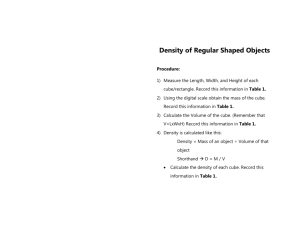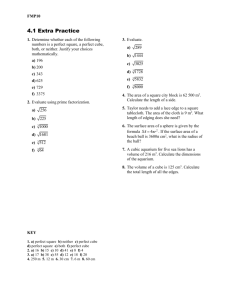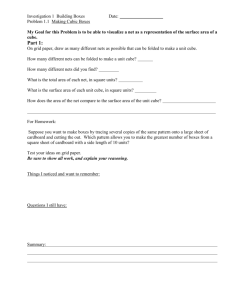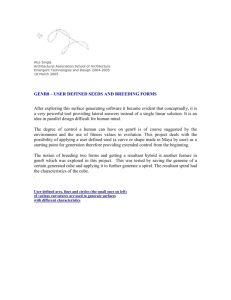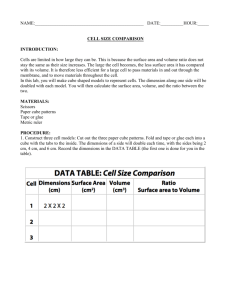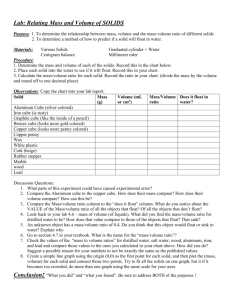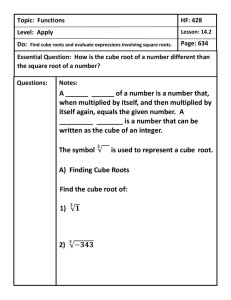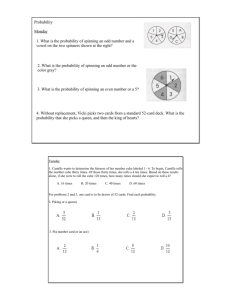volume and surface areas
advertisement
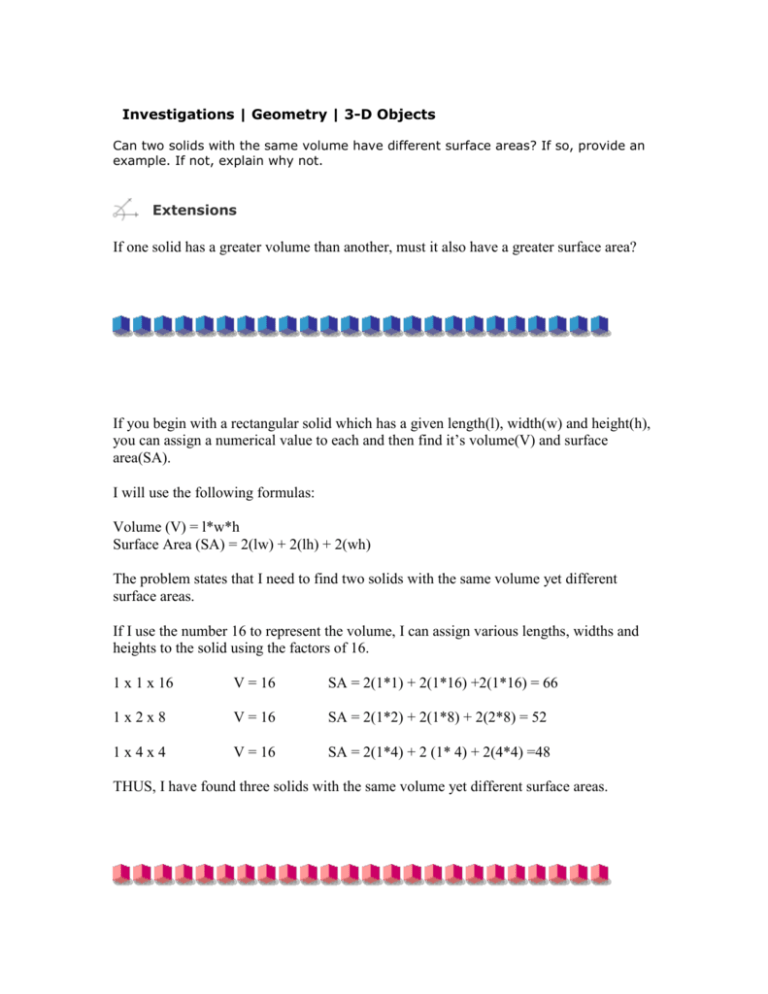
Investigations | Geometry | 3-D Objects Recommended Investigations | Same but Different Can two solids with the same volume have different surface areas? If so, provide an example. If not, explain why not. Extensions If one solid has a greater volume than another, must it also have a greater surface area? If you begin with a rectangular solid which has a given length(l), width(w) and height(h), you can assign a numerical value to each and then find it’s volume(V) and surface area(SA). I will use the following formulas: Volume (V) = l*w*h Surface Area (SA) = 2(lw) + 2(lh) + 2(wh) The problem states that I need to find two solids with the same volume yet different surface areas. If I use the number 16 to represent the volume, I can assign various lengths, widths and heights to the solid using the factors of 16. 1 x 1 x 16 V = 16 SA = 2(1*1) + 2(1*16) +2(1*16) = 66 1x2x8 V = 16 SA = 2(1*2) + 2(1*8) + 2(2*8) = 52 1x4x4 V = 16 SA = 2(1*4) + 2 (1* 4) + 2(4*4) =48 THUS, I have found three solids with the same volume yet different surface areas. An extension of this problem is to find if the volume is larger, must the surface area be larger too. Again, I assigned various values to the length, width and height of a solid, giving one a volume just larger than the other. EXAMPLE 1x1x9 V=9 SA = 2(1*1) + 2(1*9) + 2(1*9) = 38 1x2x5 V = 10 SA = 2(1*2) + 2(1*5) + 2(2*5) = 34 In the example above, the solid with the greater volume (V) did NOT have the greater surface area (SA). A further extension would be to compare the problem using a CUBE. This extension fails immediately due to the nature of a cube having all sides congruent. EXAMPLE Cube with a volume of 8 has ONE AND ONLY ONE way to assign length, width, and height: 2x2x2 V=8 SA = 2(2*2) + 2(2*2) + 2(2*2) =24 AGAIN, there are no other ways to assign measures to a cube with a volume of 8. Thus, there does not exist another “cube” with the same volume yet different surface area.



